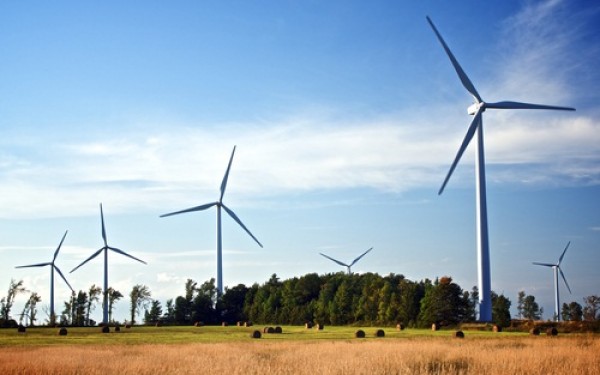When I heard that Canada would probe the potential health effects of wind power on those who live near the giant turbines, my first thought was: Haven’t we been here before? After all, Oregon and Massachusetts in the past year put out big reports that, more or less, discounted the often dramatic claims that turbine noise and light flicker are destroying lives.
But there could be a key difference with this study: Canada actually plans to do new science.

The Massachusetts and Oregon reports mainly consisted of reviews of existing literature. As such, they offered good insight into where the science of wind and health has been. Canada wants to take a step forward into the now.
In an outline of its proposed study methodology, Health Canada said it wants to sample “2,000 dwellings randomly selected from those located near 8 to 12 WT (wind turbine) installations in Canada.” Residents would be asked questions that assess their “well-being, sleep quality and noise annoyance.” Plus: the “prevalence of chronic illness and symptoms collectively referred to as ‘WTN syndrome’ are also included in the questionnaire,” the agency said.
Wind turbine syndrome was largely dismissed in the Massachusetts study, in which a panel of medical and environmental health experts reviewed both peer-reviewed and non-peer-reviewed material on the topic.
On a full range of issues, the Massachusetts panel found little or no evidence to back up claims that low-frequency sounds from turbines harm the vestibular system, that turbine noise brings psychological distress or mental health problems, and that there is an association between turbine exposure and pain and stiffness, diabetes, high blood pressure, tinnitus, hearing impairment, cardiovascular disease and headache or migraine.
An Oregon report released earlier this year came to similar conclusions, although it did allow that “sound from wind energy facilities in Oregon could potentially impact people’s health and well-being” when it exceeds state standards, and that “the potential impacts from wind turbine sound could range from moderate disturbances to serious annoyance, sleep disturbance and decreased quality of life.”
As in the United States, complaints of ill health effects from wind turbines in Canada are accompanying rapid growth in the industry. In 2010, 690 megawatts of wind power capacity was installed in Canada. In 2011 the amount was about twice that, and this year Canada is expected to set another record for new installations.
Probing the health of residents who live near wind turbines would take Canada a step further than Massachusetts or Oregon went, and the country’s health agency doesn’t plan to stop there. It wants to correlate its health reports “with calculated wind turbine noise so that any potential relationship to reported health symptoms can be reliably determined.”
Of course, self-reported statements of ill health aren’t quite 100 percent useful in a scientific study. So Health Canada also plans to gather actual objective health data from the people it interviews.
“Following the 25-minute interview, the subject will be invited to participate in the health measures collection part of the study,” the agency said. “This will include an automated blood pressure measurement and the collection of a small hair sample that will provide a 90-day retroactive average cortisol level. An objective evaluation of sleep will be undertaken using actigraphy for a period of 7 consecutive days, which will be synchronised with wind turbine operational data.”
In response to the study announcement, the Canadian Wind Energy Association said what wind industry groups have always and quite accurately said when negative health consequences of wind power are suggested: “(T)he balance of scientific evidence to date clearly demonstrates that wind turbines do not have an impact on human health,” and this “has been confirmed by numerous independent reviews of the scientific literature.” The organization said it would take a close look at the draft methodology planned for the study, which is open for public comment until August 8.

Some wind opponents, including the North American Platform Against Wind Power and the European Platform Against Windfarms, said they welcomed the study, even as they suggested it was unlikely to live up to their idea of unbiased.
“The windfarm victims would like assurances that this study will be conducted with the participation of acousticians and physicians approved by their federations,” representatives from the organization wrote in a piece published on Canada Free Press. “They will not recognize the validity of the usual biased investigations.”